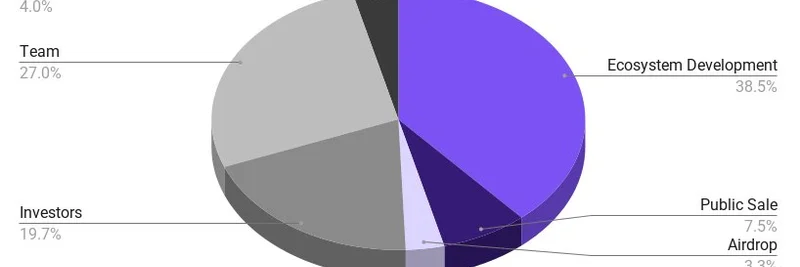In the fast-paced world of cryptocurrency, airdrops have long been a popular way to distribute tokens and engage communities. But as highlighted in a recent tweet by @basedkarbon, the nature of these airdrops seems to have changed dramatically. The original poster, quoting @torchthemall_, asked: "Why do airdrops never really airdrop anymore? Its always shenanigans." The insightful reply? "Because the goal changed from wide distribution for DAO governance participation to narrow distribution to reduce sell pressure but large enough to have a base of community support."
Let's break this down. An airdrop, for those new to crypto, is essentially a free distribution of tokens to wallet holders, often to bootstrap a project, reward early adopters, or decentralize governance in a Decentralized Autonomous Organization (DAO). Think of it as digital confetti thrown to the crowd to get everyone excited and involved.
Early examples, like the Uniswap (UNI) airdrop in 2020, embodied this wide-distribution ethos. UNI tokens were dropped to anyone who had interacted with the platform before a certain date, creating instant wealth for thousands and fostering a vibrant, participatory community. This approach aligned perfectly with blockchain's ideals of decentralization and inclusivity.
Fast forward to today, and things look different. Projects now often opt for more controlled distributions—think farming programs, staking requirements, or points systems that reward specific behaviors. Why the shift? As @basedkarbon points out, it's largely about managing sell pressure. When tokens are widely distributed, many recipients might dump them immediately for quick profits, tanking the price and undermining the project's stability.
Instead, teams aim for a "narrow but sufficient" approach: enough tokens to key supporters to build loyalty and advocacy, but not so many that the market gets flooded. This strategy helps maintain token value post-launch, attracting investors and ensuring longer-term viability. In the replies to the tweet, users like @cozymaximalist noted exceptions like Monad's broader approach, but even there, it's not as unrestricted as UNI's was.
This evolution has big implications for meme tokens, which thrive on hype and community momentum. Meme coins like Dogecoin or newer ones on Solana often use airdrops to virally spread awareness. However, with shenanigans like sybil attacks (where users create multiple accounts to farm rewards) becoming common, projects are tightening criteria to ensure genuine engagement. For blockchain practitioners, understanding these dynamics is key to navigating opportunities—whether hunting for the next big drop or building your own token ecosystem.
One reply from @0xenjoyo adds another layer: regulatory considerations. In a maturing market, teams are less inclined to disguise allocations to insiders through elaborate airdrops, opting instead for transparent vesting schedules. This transparency can build trust, but it also means fewer "free lunch" moments for the average user.
Meanwhile, @torchthemall_ lamented that in crypto, unlike traditional equities, belief in the project doesn't always translate to holding—leading to these defensive strategies. It's a reminder that while blockchain promises innovation, market realities like greed and volatility shape how tools like airdrops are used.
If you're diving into meme tokens or broader crypto, keep an eye on distribution models. Projects that balance community incentives with sustainable economics often stand out. For more insights on token strategies and the latest in blockchain tech, check out our knowledge base at meme-insider.com.
What do you think—has the airdrop golden era ended, or is this just a smarter phase? Share your thoughts in the comments below.



